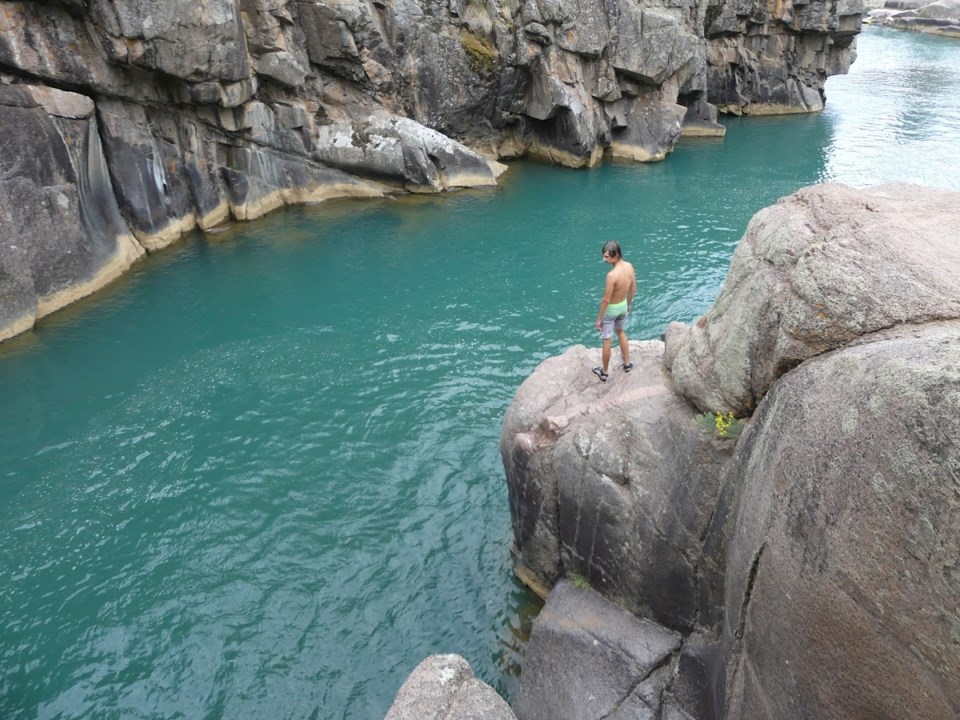Tucked just 15 miles north of Durango, Baker's Bridge is a place where history and adventure meet. It’s known for its stunning views, clear water, and cliff-jumping spots that once drew crowds each summer.
But beyond the fun, this area holds a deep connection to Colorado’s early mining days. Today, it remains one of Durango’s most talked-about landmarks—even as access becomes more limited.
The Story Behind Baker’s Bridge

Baker’s Bridge is named after Captain Charles H. Baker, who discovered gold in Colorado’s San Juan Mountains in 1860. He came back with a group of prospectors in 1861 and set up a mining camp near the Animas River. They built the first bridge in the area, 300 feet north of today’s bridge, and founded a town called Animas City, which was just north of where Durango is now. Sadly, harsh winters and a lack of gold forced them to leave the area after only a year.
Captain Baker later joined the Confederate army during the Civil War and eventually returned to the San Juan area. His life ended in a tragic turn—he was killed by Native Americans during another trip to the region. The original bridge built by Baker's group was used for over 50 years. A historical marker now stands near today’s bridge, honoring Baker’s efforts and reminding visitors of the area’s early beginnings.
Visiting Baker’s Bridge

Baker’s Bridge is about 15 miles north of Durango, Colorado, and can be found along County Road 250. To get there, head north on Highway 550 from Durango, then turn east onto County Road 250. After driving for about half a mile, you’ll see the bridge and a small pull-off area where you can park. The historical marker is located on the northwest side of the bridge.
Although it looks like a public recreation area, much of the land around the bridge is privately owned. Visitors should respect property lines and follow Leave No Trace (LNT) guidelines to help keep the area clean and open. The spot is known for its clear, deep water and tall cliffs, making it popular for swimming and cliff jumping. However, due to past issues with vandalism and trespassing, access has become more limited in recent years, and fences have been added to keep people off private land.
A Local Rite of Passage

For many teens and young adults in Durango, jumping off Baker’s Bridge was more than just a fun summer activity—it became a tradition. The clear blue water, high cliffs, and natural beauty made it a favorite spot to swim, relax, and show off daring jumps. Locals often describe it as a “rite of passage” and a place filled with lasting memories.
Access Becomes Limited
Even though Baker’s Bridge has long felt like a public hangout, the area is actually on private property. Over time, issues like graffiti, littering, and trespassing became more common. These problems, along with safety concerns, pushed the landowners to take action. Both sides of the river, owned by two different families, were put up for sale in 2020, adding more uncertainty about future access.
Some locals were heartbroken by the changes, especially those who had spent years visiting the spot. One landowner, Al Frink, said he had held onto the land out of love for the place, but vandalism made it hard to keep open. With growing worries about liability and respect for private property, landowners began making moves to close off certain areas to the public.
New Fencing to Block Entry
To help protect the land and mark boundaries, a fence was put up near the bridge in 2020. It was built on the western side of the Animas River and south of the bridge, right where most people used to gather. The goal was to stop people from trespassing, reduce damage to the area, and avoid legal trouble if someone got hurt while swimming or jumping.
In the past, older fences had been slowly torn down by visitors, but this one was meant to stay. The fence also gives the land a chance to heal from years of heavy use. While some small spots near the road may still be open, they aren’t meant for public recreation. With the future of the land still unclear, what happens next may depend on who buys the property and how they choose to care for it.
How to Visit Baker’s Bridge Responsibly

While Baker’s Bridge is a beautiful and historic place, it’s important to treat it with care, especially since it’s on private land. If you’re lucky enough to visit, keep in mind that respect and responsibility help protect spots like this for future generations. Even small actions can make a big difference in keeping the area clean, safe, and open.
- Stay on Public Paths – Avoid crossing fences or entering marked private areas.
- Pack Out Your Trash – Bring a bag and take everything you brought with you, even food scraps.
- Don’t Damage Nature – Leave rocks, trees, and plants as they are. Avoid graffiti or carving into surfaces.
- Keep Noise Low – Be mindful of others and nearby homes. Loud music or shouting can disturb wildlife and locals.
- Be Safe and Smart – Jumping into water can be risky. Know your limits and never pressure others to take a jump they’re not comfortable with.
Final Thoughts on Visiting Baker’s Bridge
Baker’s Bridge is more than just a swimming hole, it is filled with history, natural beauty, and local memories. While it has become harder to access due to private land restrictions, the area still holds a special place in Colorado’s outdoor culture. If you plan to visit Baker’s Bridge, remember to be respectful, safe, and leave no trace behind. This way, the landmark can continue to be a meaningful spot for those who love Colorado’s wild places.


